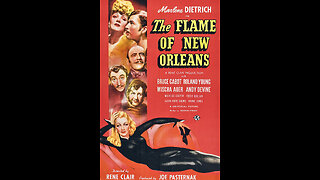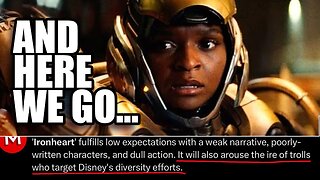Premium Only Content

The Bishop's Wife (1947) | Directed by Henry Koster
"The Bishop's Wife" is a charming and heartwarming fantasy film released in 1947, directed by Henry Koster. This film stands out as a beloved classic, especially noted for its holiday theme and its exploration of faith, love, and the true meaning of Christmas. The screenplay, based on the novel by Robert Nathan, revolves around a suave angel named Dudley, played with charismatic elegance by Cary Grant, who comes to Earth in answer to a bishop's prayer for guidance.
The story centers on Bishop Henry Brougham (played by David Niven), who is so preoccupied with the task of raising funds for a new cathedral that he neglects his wife, Julia (played by Loretta Young), and his duties to his community. Enter Dudley, the angel, whose assignment is to help Henry find his way but who ends up becoming close to Julia in the process, causing a series of comedic and poignant moments. The film weaves together themes of personal growth, the rediscovery of love, and the understanding of what truly matters in life, all set against the backdrop of a picturesque American town during the holiday season.
"The Bishop's Wife" is celebrated for its stellar cast and their performances. Cary Grant's portrayal of Dudley is effortlessly charming, bringing a lightness and wit to the film that balances beautifully with the more serious themes at play. David Niven provides a solid counterbalance as the beleaguered bishop, and Loretta Young's performance as Julia adds depth and warmth to the narrative. The chemistry among the lead actors is palpable, contributing to the film's enduring appeal.
Henry Koster's direction is adept, with a deft handling of the film's blend of fantasy and drama, ensuring that the story remains engaging without becoming overly sentimental. The film's cinematography and production design contribute to its timeless quality, creating a setting that is both idyllic and grounded in its portrayal of mid-20th-century America.
While "The Bishop's Wife" is generally well-regarded, some modern audiences might find its depiction of gender roles and the dynamics within the bishop's marriage dated. The narrative, predominantly from the male characters' perspectives, focuses less on Julia's inner life, leaving some potential for character development unexplored.
Furthermore, the film, like many of its era, tends to resolve its conflicts in a manner that might seem too neat or simplistic by contemporary standards. The intervention of an angelic figure to solve personal and marital issues could be viewed as undermining the complexity of real-life challenges, though this critique is mitigated by the film's clear intent to inspire and uplift rather than to provide a nuanced exploration of marital dynamics.
-
 1:19:15
1:19:15
Classic Films & Movies Archive
8 days agoThe Flame of New Orleans (1941) | Directed by René Clair
192 -
 22:17
22:17
Clownfish TV
20 hours agoThe Ironheart Narrative Begins...
3.56K5 -
 LIVE
LIVE
BEK TV
22 hours agoTrent Loos in the Morning 6/27/2025
178 watching -
 9:53
9:53
MattMorseTV
19 hours ago $19.38 earnedCNN just made a FATAL MISTAKE.
55.3K67 -
 25:23
25:23
Uncommon Sense In Current Times
16 hours ago $2.34 earnedInside Iran: Lana Silk on the Underground Church, the Islamic Regime & the Fight for Freedom
12.6K3 -
 12:59
12:59
Actual Justice Warrior
16 hours agoDemocrat Calls For Gangs To ATTACK ICE
6.85K16 -
 34:18
34:18
Athlete & Artist Show
4 days ago $1.57 earnedPanthers Win BACK 2 BACK, Bennett Wins Conn Smythe, Can Florida Keep The Rat Pack?
12K1 -
 23:08
23:08
DeVory Darkins
1 day ago $5.90 earnedCNN suffers HUMILIATING SETBACK after Iran confirms damage to nuclear sites
15.5K80 -
 8:09
8:09
Nate The Lawyer
1 day ago $1.70 earnedKarmelo Anthony Indicted for First‑Degree Murder Facing Life In Prison
13.3K9 -
 1:06:58
1:06:58
The Chris Cuomo Project
1 day agoAOC Is KILLING the Democratic Party Over Iran
11.3K9